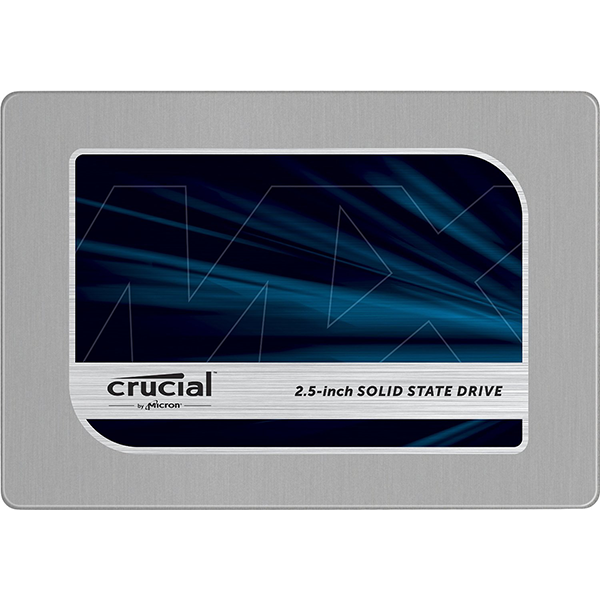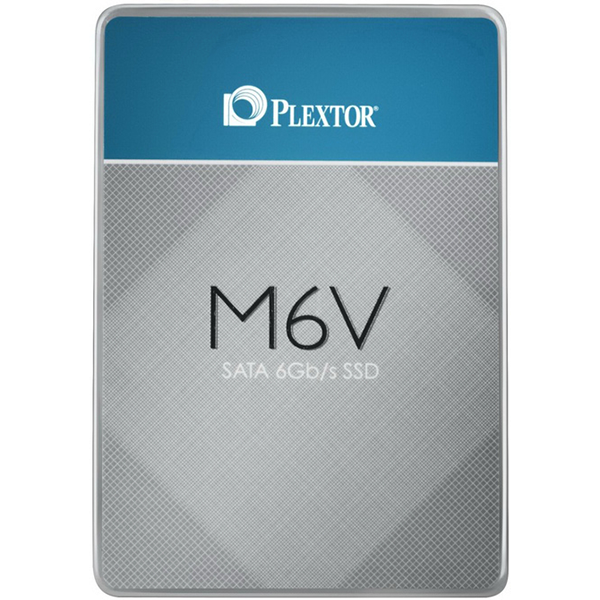Mushkin Reactor 256GB SSD Review
Mushkin's Reactor SSDs sell for very low prices online, and the 1TB model is one of our top value picks. Is the 256GB model as good of a value? We answer that today.
Why you can trust Tom's Hardware
Four-Corner Performance Testing
Comparison Products
Nearly all of the drives on this chart utilize TLC NAND flash with write enhancement technology to deliver high burst speeds that are not sustainable for more than a few seconds. The Samsung SSD 850 EVO is the current midmarket performance leader. Its quad-plane TLC flash breaks the mold and delivers longer sustained write speeds than other TLC SSDs shipping with flash from Toshiba and Micron. The Plextor M6V is a newer model that uses the same playbook as the Reactor. The M6V uses the SMI SM2246EN controller like the Reactor but pairs it with Toshiba's 15-nm MLC flash.
To read about our storage tests in-depth, please check out How We Test HDDs And SSDs. Four-corner testing is covered on page six of our How We Test guide.
Sequential Read
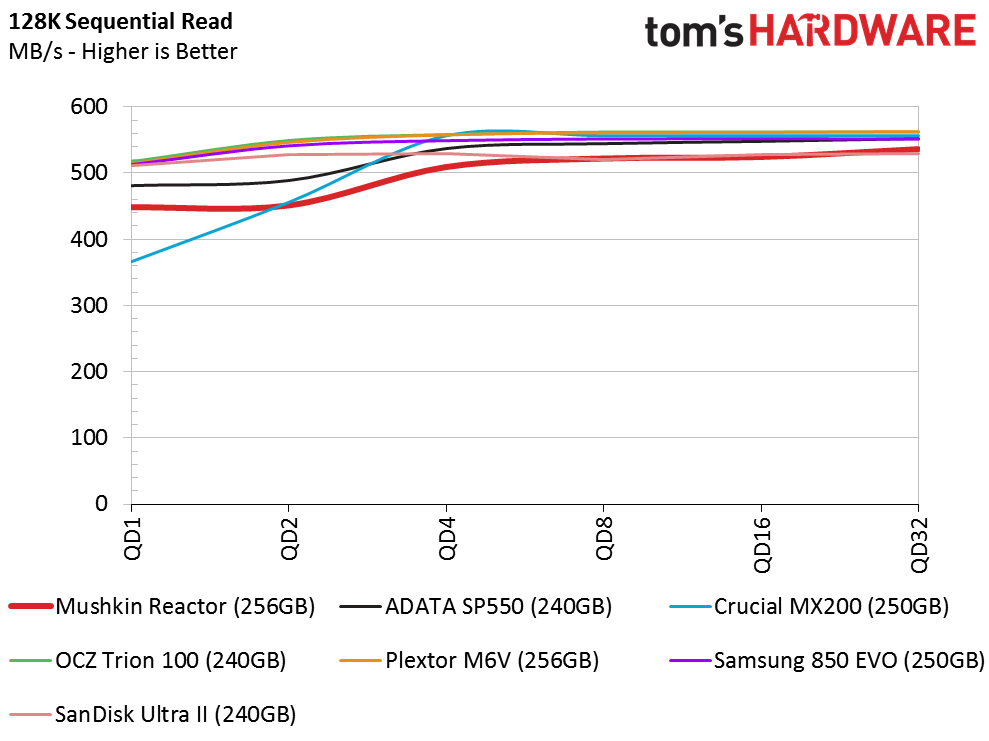
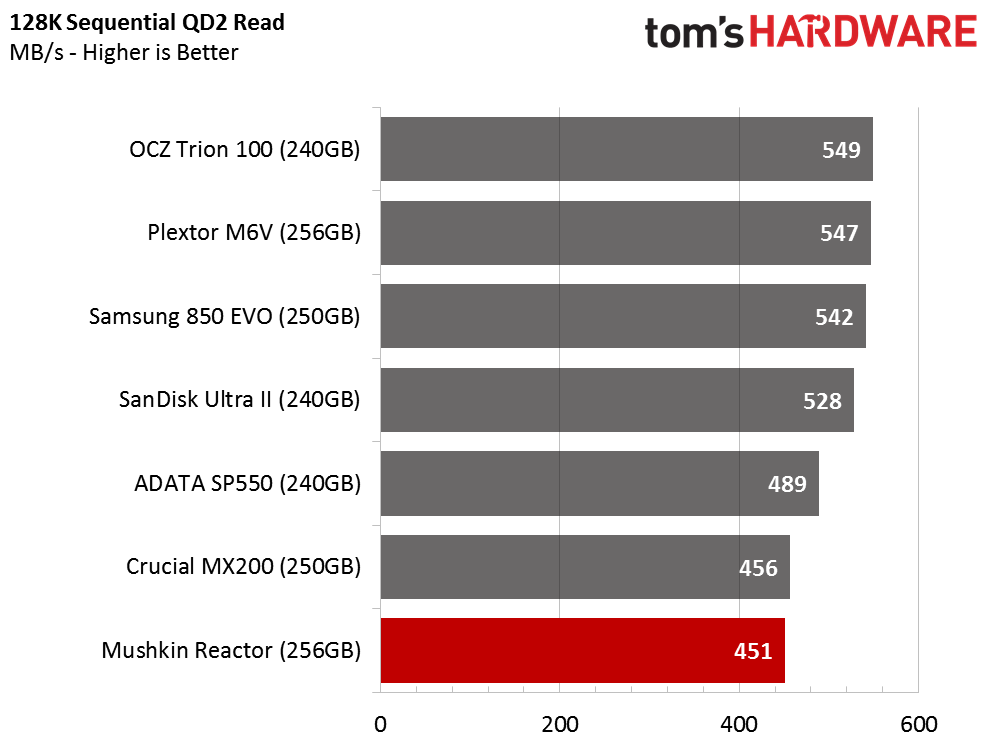
The differences between the drives however, have no affect on the read perimeter tests, as observed in the set of charts above. Sequential random performance is high across the board for all of the drives. The Reactor 256GB isn't as fast as most of the other models at low queue depths in this measurement, but it does operate at higher speeds with larger block sizes.
Sequential Write


The sequential write performance is at the lower end of the scale as well compared to most of the other low-cost SSDs. The Adata SP550 and the OCZ Trion 100 have slow buffer flushes to TLC NAND, so the results are inconsistent, much like their write performance.
We get a good look at the difference between Micron's 16-nm MLC and Toshiba's new 15-nm MLC flash with the SM2246EN controller. The Toshiba flash used in the Plextor M6V 256GB is roughly 40MB/s faster. The M6V does cost more than the Reactor, though. Both drives are still in the midrange of sequential write performance, with the SanDisk Ultra II and Samsung 850 EVO earning high marks.
Random Read


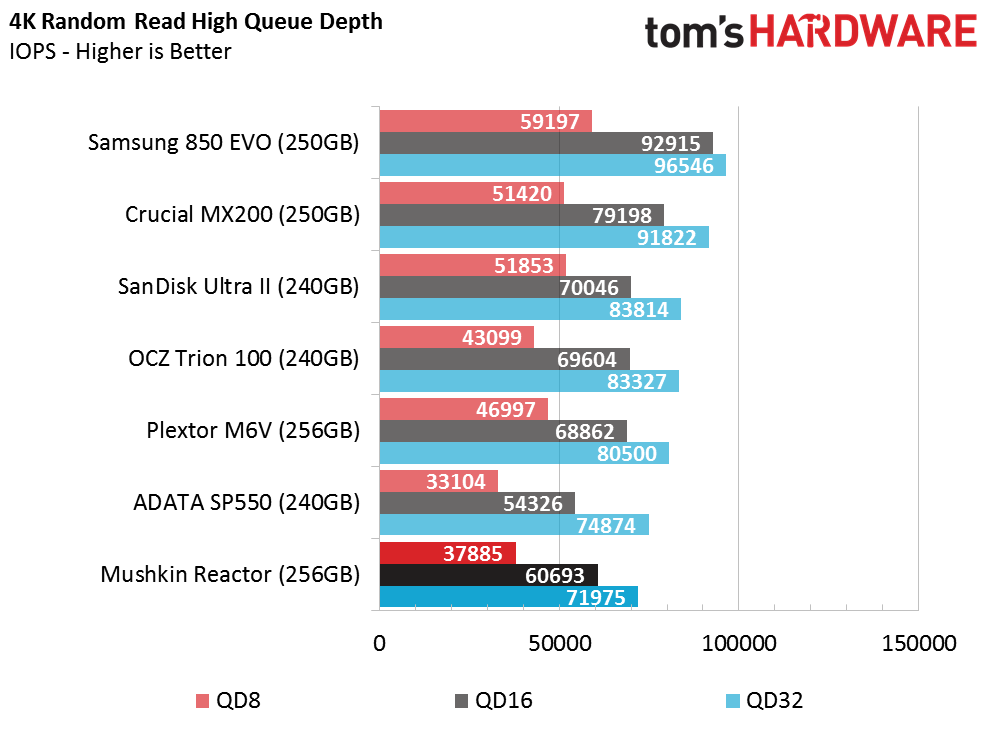
The Mushkin Reactor 256GB delivers nearly 8,000 random read IOPS at queue depth 1 with 4KB of data. We like to see 10,000 IOPS in this test from high performance drives, but there isn't an established standard for low-cost SSDs. The Samsung SSD 850 EVO does manage to achieve that high mark at a low price, though. That's part of the reason it's the standard by which all other low and mid-priced SSDs are measured.
Get Tom's Hardware's best news and in-depth reviews, straight to your inbox.
Random Write
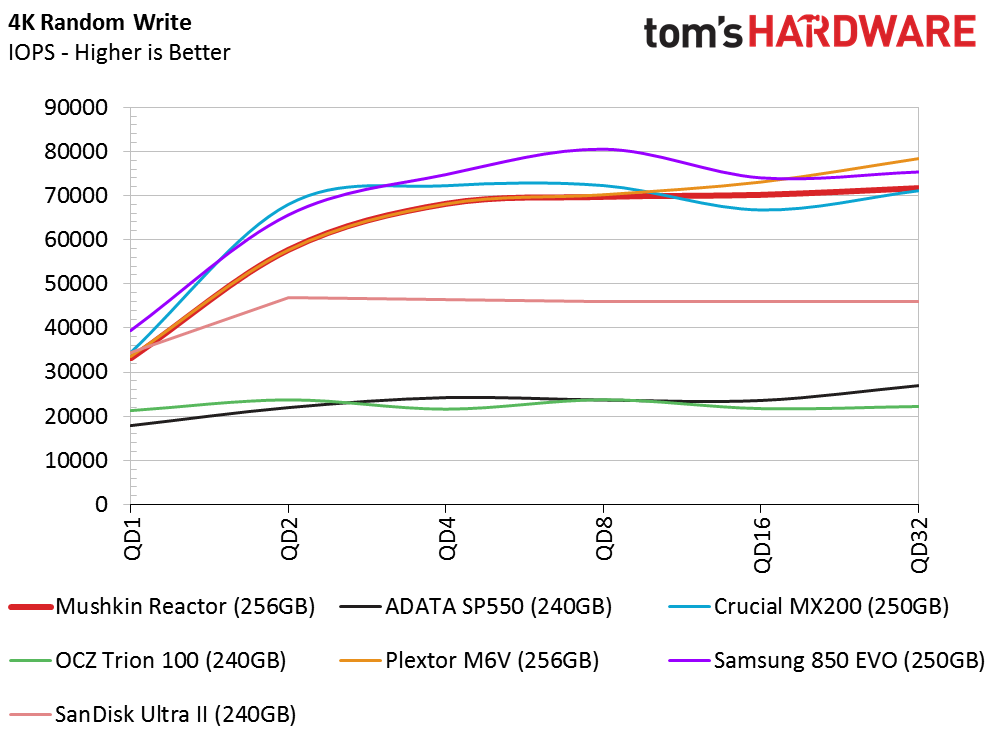
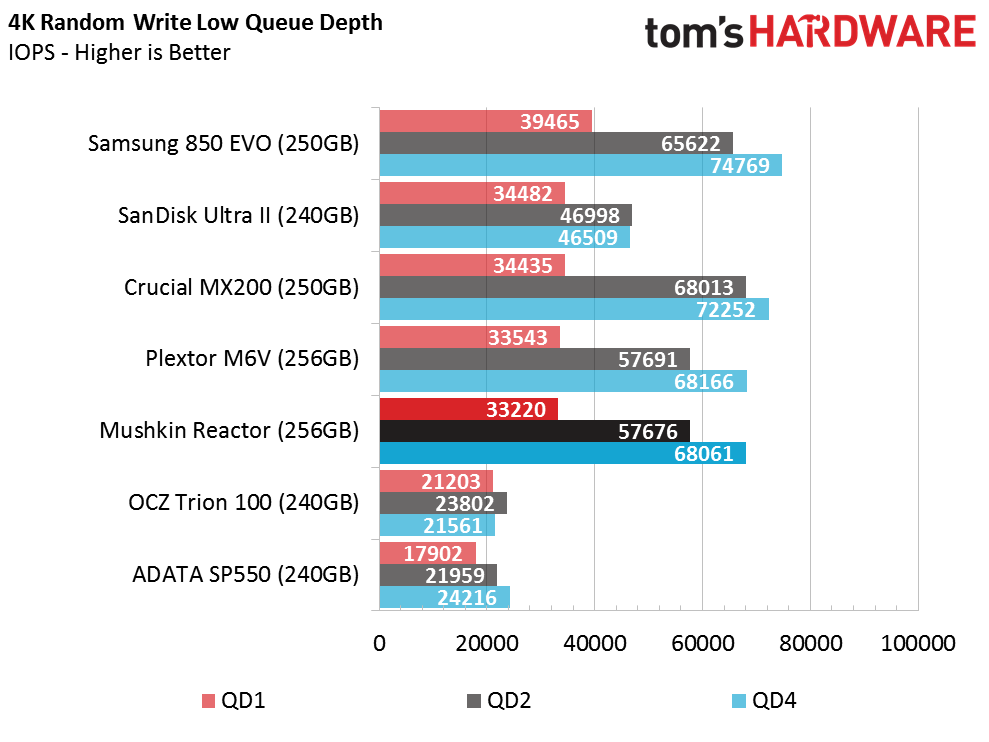
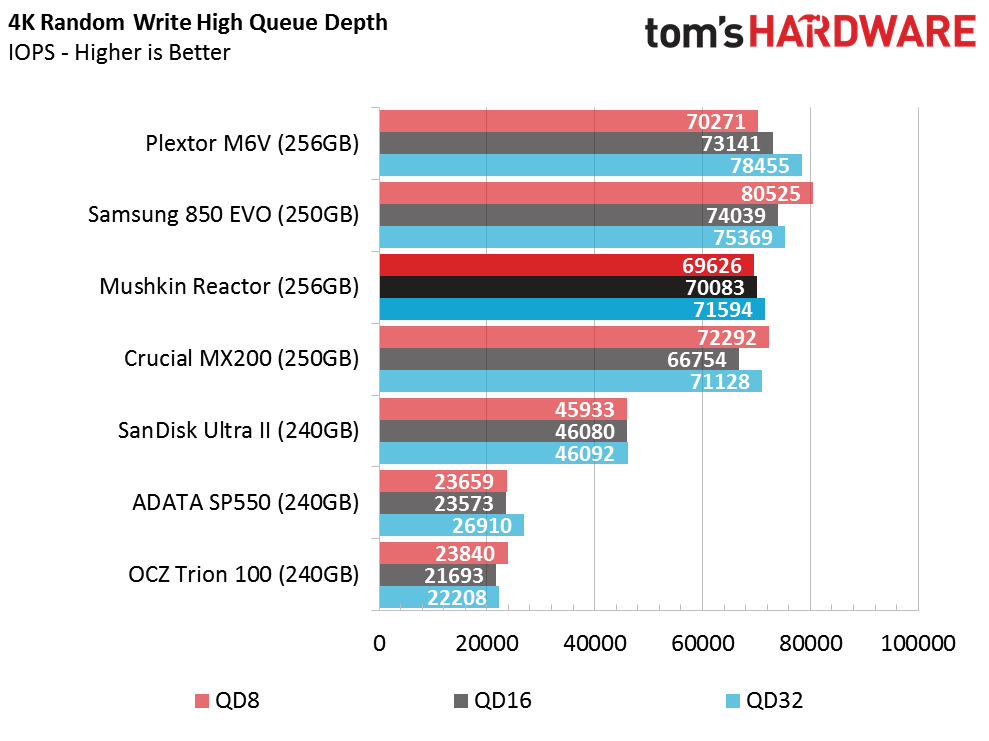
The Plextor M6V 256GB and the Reactor 256GB have nearly the same 4KB random write curve as the drives ramp up from queue depth 1 to queue depth 8. The Reactor is faster than the Ultra II in this test past queue depth 2 and much faster than the Trion 100 and the SP550. The Trion 100 performs a little better with compressible data but not well enough to make up the distance between it and the Reactor.
Current page: Four-Corner Performance Testing
Prev Page A Closer Look Next Page Mixed Workload And Steady State
Chris Ramseyer was a senior contributing editor for Tom's Hardware. He tested and reviewed consumer storage.
-
mapesdhs It's a pity you weren't able to obtain a Trion 150 for this review, as that would be the more logical OCZ comparison once stock becomes available.Reply
Also, isn't it time we just concluded that the PCMark8 "Real World Software" tests are a complete waste of time? They show no statistically relevant variation at all, even though in many cases it's easy to see significant differences between, say, an 850 EVO and a Trion 100.
-
CRamseyer Hello,Reply
My Trion 150 drives just arrived. You can read a bit about them here:
http://www.tomshardware.com/news/ocz-trion-150-firmware-tweaked,31126.html
The Real World Software Tests show valuable data for those who are not well versed in SSDs. I think people need to understand that we are talking about differences in performance measured in seconds and not minutes. -
knowom http://www.newegg.com/Product/Product.aspx?Item=N82E16820211984Reply
Best value SSD atm if you ask me. If you want more storage grab a second which you can use in raid or to use as another partition with it's own bandwidth. Iither way huge price to performance value.

